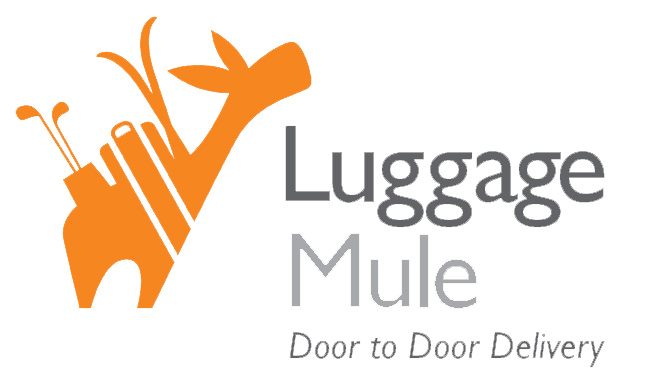As we start to navigate a new normal in a (somewhat) post-COVID world, we ask: what does the future of golf tourism look like?
The coronavirus pandemic has tested every fiber of our world, but few industries have been impacted quite as much as travel and tourism.
Thanks to a combination of factors – like the COVID-19 vaccine, travel corridors and traffic light systems promising quarantine-free getaways – appetite to travel again is slowly on the rise.
And just like that, there’s a glimmer of light at the end of what has been a very dark tunnel for golf tourism. With domestic travel in particular on the up, the industry in the UK has a prime opportunity to do things differently; to tap into new markets and put a greater focus on technology, responsibility and sustainability.
Does a green light really mean go for golf tourism?
In the UK, we might have had the green light to travel abroad (albeit to only a few select destinations), but does that mean we’re all ready to pack our bags and fly?
Not quite.
According to a YouGov report, there are three major barriers to international travel right now:
- A lack of clarity on safety protocols, like testing and vaccination certificates
- Costly and confusing government rules and restrictions
- Fear of quarantine
But as the desire to fly to foreign lands has decreased, intentions to travel domestically have risen sharply.
YouGov's recent International Travel & Tourism Report 2021 found that more than 50% of people surveyed plan to travel domestically, vs only 18% internationally.
It’s, therefore, safe to assume that golfers are less likely to jet off to sunnier shores, opting instead to holiday closer to home.
Surprising? Not really.
What I think it all comes down to is that it’s really complicated to travel abroad at the moment.
Before COVID-19, my biggest concern when I went on holiday was whether I’d packed too much, and my case would be too heavy (spoiler: it usually is – I never learn). Now there’s a whole host of things to worry about.
But stay closer to home and it’s a very different story; there’s no quarantine to worry about or rules and regulations that change in the blink of an eye. It’s that ease and simplicity of travelling within the UK that the golf travel industry needs to leverage.
Who is ready to travel?
Understanding your audience is critical to any business.
But with competition intensifying, it’s more important than ever for the golf tourism industry to understand exactly who is ready to travel and why.
According to YouGov, Millennials and Gen X are going to drive the main source of demand in the next 12 months – that’s anyone between the ages of about early-20s to mid-40s.
It makes sense. Unlike their older counterparts, Millennials and Gen Xers generally have fewer immediate health risks, and a big percentage of them have already been double jabbed. They’re also more likely to be in a position to fund their own trips, which is less likely the case for younger Gen Zers.
But what does that mean for golf?
It means that we have an opportunity to tap into a new, much younger market of golfers.
And to do that, we have to think differently as an industry.
This is the first generation of tech natives – they’ve grown up using phones, laptops and social media. Technology and innovation need to be a core focus and golf clubs and resorts need to get smarter.
This is also a generation that craves new experiences. They want to feel like what they’re doing is important in some way and they’re heavily influenced by other people’s reviews and opinions online. Clubs and resorts need to understand what really matters to this generation and use that to come up with offerings that make them tick – on and offline.
Responsible travellers
According to YouGov, the second largest segment of traveller is the responsible traveller. And it’s growing quickly.
They place an emphasis on environmental consciousness and care about their impact on the environment, nature and communities. It’s not just about how they travel somewhere, but what they do and where they spend their money when they get there; offsetting the emissions they’ve created when they travel, conserving local heritage and supporting local communities.
The pandemic has given us all an opportunity to reassess our impact on the environment. Clear canals in Venice, wildlife roaming free in usually bustling cities; we’ve got a newfound respect for our surroundings.
As an outdoor sport, golf is generally an environmentally friendly game. Compare it to the likes of F1 – which generates hundreds of thousands of tonnes of emissions every year – and it’s positively, glisteningly green. But it’s definitely not immune to environmental criticism, and there’s always more we can do.
Golf clubs, resorts and hotels have an opportunity to meet the needs of this new type of traveller by ensuring everything they do is as sustainable as possible. Even the simplest initiatives can go a long way – from reusable water bottles and recycled coffee cups to sourcing local suppliers and supporting nearby communities.
Time for a work-ation?
A lot of people have more freedom to work away from the office now than they did pre-COVID, and they’re choosing to make the most of it.
With more people than ever working from home (and undoubtedly desperate for a change of scenery), a new type of holiday has emerged.
Introducing: The work-ation
Move your office to wherever you fancy and visit somewhere new without having to use up any precious holiday allowance.
Just imagine: Working from a picturesque golf resort somewhere and sneaking in a round of golf before dinner. It certainly beats typing away at my kitchen table.
Vacation rental giant Airbnb has backed up this trend, reporting a huge spike in short-term rentals, and it’s definitely something that could easily be adopted by golf clubs and resorts.
Where do I sign up?















